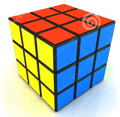Fabric and Home Décor Manufacturing Company
Module: Production Planning and SchedulingIndustry: TextilesSchedule a FREE Demo
Client Overview: The Client is the world’s largest maker of soft furnishing fabrics with daily production of over 120,000 sq mtrs of high-quality fabrics for homes across 5 manufacturing plants in India. With team of 250 people in product development, company produces 20,000 SKUs/year.Key Features
- Simultaneous Capacity / Material Planning
- Variant Management Logic
- Sequence Dependency
- Scenario Planning
- Custom Logic for Weaving & Fabric Dyeing
Problem Method and Result

The Puzzle
- The client has a strong orientation towards product development and thus has a highly complex product mix problem.
- The client was running SAP and was in search of a planning and scheduling solution.
- The objective was to improve capacity utilization. And visibility on the estimated delivery date to improve customer service level and improve the throughput..

The Solution
- The current ERP was designed to handle the different variants (design and matching) of the same SKU.
- PPS had to customize the SCM tool to incorporate this variant feature.
- Custom logic was built to take care of the logic requirements of each of the different work centers in production, such as Weaving and Fabric Dyeing.
- APS looked at both Material and Capacity Planning to arrive the final schedule.
- Fabric Dyeing incorporated concepts of Sequence Dependent Set Up times. Whereas Weaving incorporated concepts of balance to weave.
- APS also helped them generate custom reports for capacity, inventory and work order planning.

The Result
- Better visibility of the Production.
- Better Productivity and Capacity Utilization.
- Based on the output of the tool, a single plan is created taking into account real time inventory and material constraints.
- Using this tool, the client was able to analyze and simulate various scenarios.
- The client could commit delivery dates to their clients thus improving customer service levels.
More Case Studies
Crompton
 Simultaneous planning for finite capacity and material for APIs and Formulations.
Simultaneous planning for finite capacity and material for APIs and Formulations.
ATG
 Optimize planning of product mix to minimize changeovers considering various planning and production constraints.
Optimize planning of product mix to minimize changeovers considering various planning and production constraints.Related Products
S Suite
A Suite
V Suite
I Suite
Related Products

Replenishment Planning

Demand Forecasting

Dashboards

Production Planning and Scheduling

Address
3rd Floor Stellar tower, Sion Panvel Road,Opposite K Star Mall, Chembur, Mumbai,Maharashtra 400071Contact
info@inquizity.com+91-9833257112Copyright
Copyright (c) 2020 Inquizity Metanoia OPC Pvt. Ltd.GST: 27AAECI6558A1ZNSchedule a FREE Demo
Fabric & Domestic Cleaning Products Company
SOLUTIONS DESIGNED TO SYSTEMATICALLY ESTIMATE MARKET DEMAND
Be it New Product Development, Planning, or Promotions, implementing collaborative Demand Forecasting provides you with statistical / ML / AI data to support the course of action in the medium term.
the puzzle
Demand Planning comprises key step of arriving at a baseline number. This is done by using Statistical and ML/AI methods. The Module applies various methods of forecasting on the historical Sales data to arrive at the forecast in the coming months. The forecasting can be done at various levels such as SKU-Depot / Brand-Region / SKU Region
the solution
the result
Multiple Heirarchy
Forecasting at multiple Hierarchies e.g. SKU-Location, SKU-Sales Office, Brand-Channel etc.
Supersession
Supersession that allows linking of old to new items to provide meaningful continuity in history for effective forecasting new product
Statistical Methods
Variety of Forecasting Techniques using efficient Python to take care of different distributions such as seasonality, promotions etc. Also allows for Outlier Detection
Classification of Products
Dynamic Classification of Products across Runner / Repeater / Stranger using different parameters of frequency, variability etc.
ML / AI Methods
Selection of different AI / ML Methods for cases where ML can be implemented
Choice of Error Methods
Selection of Techniques based on different Error Measures with ability to add custom Statistical Techniques
